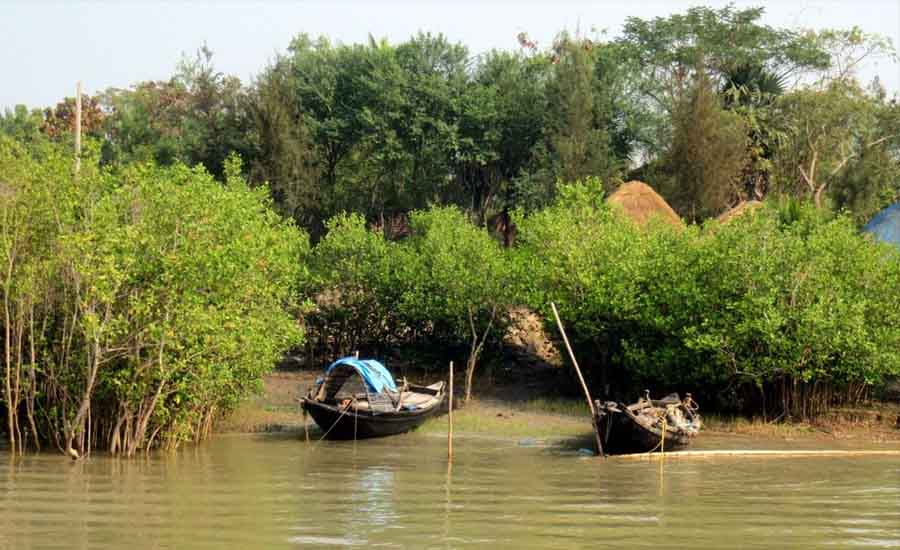The incessant rains of the past summer, the looming threats from new research into earthquake-prone belts, the future scarcity and poisoning of drinking water are only some of the grave issues that are staring at the metropolitan city of Kolkata. As another year draws close, a major highlight remains the climate change uprising of the younger generation.
The massive fire in the Amazon rainforest raked global concern because this largest tropical green coverage on earth soaks up millions of tonnes of carbon produced by humans annually and acts as an environmental stabiliser. Closer home, the Sundarbans too act as the natural purifiers and the bar of environmental balance. When it comes to Kolkata, Sundarbans matter a lot.
The Numbers and Stats
A report by The Urban Climate Change Research Network (UCCRN) identified Kolkata among the “top 10” cities that have a big population exposed to the risks of coastal flooding. This is a highly probable future scare for the city compounded with the challenge of climate refugees pouring in from neighbouring Bangladesh. The only effective shield that the city has against this scenario is a denser and better mangrove cover in the Sundarbans delta that can act as a shield against erosion, flooding, and tropical storms.
However, the severity of climate change evident from erratic monsoon and cyclone patterns is negatively affecting the mangrove delta making it susceptible to submerging if the sea levels rise any further. Besides, research has shown that by 2070, Sundarbans will cease to be an effective habitat for Royal Bengal Tigers aiding their possible extinction in the wild. The increasing population, rising soil salinity, and dwindling mangroves are weakening the Sundarbans which has absorbed 4.15 crore tonnes of carbon dioxide.
The Reality
The importance of the Sundarbans and planting more trees in its vulnerable villages is abundantly clear as far as Kolkata is concerned. For residents of the city of joy, the disappearing mangroves of the Sundarbans will only mean
- open access to higher tides
- no shield against intense storms
- disappearing carbon sink
- loss of ecological habitat for many species
- dwindling source of food, especially honey and fish
- increased water salinity further inland
- displacement of coastal communities leading to the refugee crisis
Many villages in the delta have seen a loss of houses and livelihoods with the sea pushing in. The seawater rising level in the Sundarbans is higher at 3.14 mm per year than the average global sea-level rise. The farmlands have turned saline making the growth of paddy or vegetable produce near to impossible.

Every household in far-flung villages now has at least one of the family members working as a migrant labourer further inland, either in cities or other metros. The choices that the city and its people, and administration make today stand to determine if the ecological beacon that is Sundarbans exists in the future. What is at stake is the question of the survival of people in Kolkata and throughout the delta.
The Roadmap
India’s contribution to the global carbon emission was 7% in the year 2018 and the first 10 months of the current year are showing steady levels in keeping with the commitments to the Paris Agreement. A great part of this initiative will have to include turning towards renewable energy sources instead of fossil fuels and increasing the cover of trees.
The preservation of our natural environment hasn’t been so effectively and importantly glaring ever before than it is today. The signs of change are everywhere. It is high time we took a step towards addressing it.
The step is to plant more trees in Sundarbans.
This does not mean that you take the next available vacation with saplings in hand. Planting more trees, especially in the Sundarbans requires careful consideration of varieties of trees and monitoring of their growth. On the other hand, it does not just end with a token donation of some amount to any organisation. How will you track the actual work done and progress?
Initiatives like Grow-trees are steering the wheel in the right direction.
This wonderful project helps individuals and organisations alike to responsibly be an active part in the planting of trees in the Sundarbans. They have a global outreach and a cost-effective plan that aims to plant trees in the periphery areas of Sundarbans National Park that includes many villages along with the South 24 Parganas district of West Bengal. A total of 350,000 trees have been committed to this project.
NK Realtors is proud to contribute towards this commitment as a part of its CSR activity in association with Grow-Trees. There are a lot of developmental and climatic pressures on the Sundarbans which constitute 43% of the country’s total mangrove cover. According to the 2017 India State Forest Report, there have been only a marginal rise of 8 sq. km in mangrove cover since 2015. This can change if every individual and organisation decides to give back to the environment by planting more trees.
Kolkata is the pride of its citizens and its well-being should also be the responsibility of its denizens. The team of NK Realtors hopes that through their CSR outreach in planting trees in Sundarbans, they can inspire some of those citizens to contribute towards the environment.






